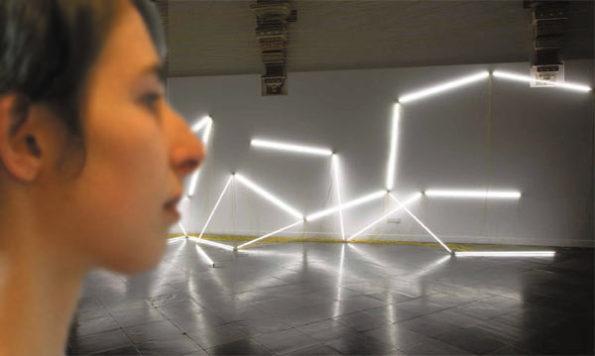Search
To search for an exact match, type the word or phrase you want in quotation marks.
A*DESK has been offering since 2002 contents about criticism and contemporary art. A*DESK has become consolidated thanks to all those who have believed in the project, all those who have followed us, debating, participating and collaborating. Many people have collaborated with A*DESK, and continue to do so. Their efforts, knowledge and belief in the project are what make it grow internationally. At A*DESK we have also generated work for over one hundred professionals in culture, from small collaborations with reviews and classes, to more prolonged and intense collaborations.
At A*DESK we believe in the need for free and universal access to culture and knowledge. We want to carry on being independent, remaining open to more ideas and opinions. If you believe in A*DESK, we need your backing to be able to continue. You can now participate in the project by supporting it. You can choose how much you want to contribute to the project.
You can decide how much you want to bring to the project.

The real and the apparent, perception and light. Navid Nuur presents in Matadero an exhibition where the physical experience makes it possible to travel to the origins of art, to some of the primordial questions about the meaning of work and the function of art.
Navid Nuur acts as an illusionist whose main working material is light. His works are invitations to explore, the aim being to awaken the curiosity, generated by the surprise. And in “Hocus focus” it is the magic of light that transforms the objects before our very eyes. Navid Nuur says he is interested in how light affects our comprehension of these objects. He lays them bare and shows them just as they are. The materials that form the works are functional, everyday: plastics, tubes, a mountain of salt, devices that are transformed in the darkness, emerging with a particular glow, liberated of their functionality. The exhibition space, warehouse 16 of Matadero in Madrid, is a large open space, with its brick walls and industrial feel, in stark contrast with the warmth of the luminescence that Nuur has distributed here and there.
On crossing the threshold, the mysterious words “Hocus Focus” form a portal to a strange world, evoking the distant world of the esoteric, of magic tricks, but also of tomfoolery and tromp l’oeil. The world of the history of western art is also one of deceiving the gaze. With no desire to go too far back in time, one would have to highlight the treatises on painting and perspective by Alberti or Piero della Francesca, to cite two illustrious antecedents. All representation is a fiction of verisimilitude. And as Alberti himself affirms in “Della Pittura”, the canonical book of western art for many centuries, the aim of the painter (artist) is “ to represent with outlines and colours on a smooth plane (…) certain parts of objects, presented to the eye in such a way that from a given distance and position they seem to appear in relief and very similar to those objects.”
In that thirst for scienticism, in which the illusion of the real unfolds according to mathematical formulae and principles of geometry, amidst the different vanishing points of the system of perspective, he assisted in a series of optical experiments that aimed to capture the real by way of specular reflection. Alberti did nothing more than consolidate an old tradition that dates back to ancient art: the verisimilitude in deception. To make the eye believe that what it sees is as true as what you believe you are seeing. However the Avant-guard of the 20thC placed the emphasis per se on the art object in the foreground and not in its representation. The works of modern psychology provoked the study of the limits of human perception and with them, the birth of Op Art as an experiment for vision.
What Nuur proposes is that we introduce ourselves into a camera obscura where the limits of the objects seen are defined by the physical limits of those who contemplate them. Although they appear to us in plenitude.
Some might think of the similitudes between the work of Nuur and that of Dan Flavin, whose working material is immediately associated with neon tubes. But Flavin arranged the fluorescent lights as a melange of visual stimuli, creating at times diffuse ambiences where perception was confused by the mixture of perfectly autonomous tones and colours. In playing with our perceptions, Nuur doesn’t seek to create atmospheres nor limit himself to showing us magic tricks, as he so ably tells us in a sort of semantic game. Because deep down what talks in his work are the objects themselves, their indifferent quality, that seems so distant, so far from the role that they are generally attributed as consumer objects.

"A desk is a dangerous place from which to watch the world" (John Le Carré)